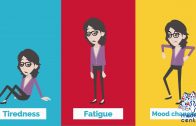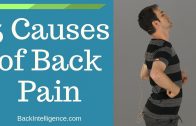The race to stop ageing: 10 breakthroughs that will help us grow old healthily
The biggest killers in the modern world, like dementia and cancer, are down to ageing. Is it possible to tackle the ageing process so we can live for longer and stay healthier too?
Ageing is the single largest cause of human suffering. It might sound counter-intuitive, but it makes sense when you think it through: all of the biggest killers in the modern world, from cancer to heart disease to dementia, affect older people far more often than younger ones.
We’ve even seen it with coronavirus, with the oldest patients hundreds of times more likely to die of the disease than children or young adults.
If you add it all up, of the 150,000 deaths that happen every day on Earth, over 100,000 of them are caused by ageing. Deaths from problems like heart disease are preceded by years of physical decline, loss of independence, and so on.
And then there’s the problems we don’t list as diseases: the frailty, the forgetfulness, the incontinence… Add all this suffering together, across billions of people, and nothing else comes close.
So, rather than tackle these individual problems one at a time, why not go after the real prize: the ageing process that causes them?
I think this is the most exciting idea modern medicine – which is why I’ve written a book about it, called Ageless: The New Science Of Getting Older Without Getting Old. To whet your appetite, these are the top 10 breakthroughs that prove this idea isn’t science fiction – from the discoveries of the past, to the cutting-edge science of the present day.
Dietary restriction

For tens of thousands of years of human history, ageing seemed inevitable. However, this dogma was overturned by experiments in rats in the 1930s. Scientist Clive McCay found that rats fed substantially less than normal could live much longer than their compatriots whose food wasn’t being rationed. And, crucially, they weren’t having their time as rat geriatrics extended – they were doing so by staying young for longer, deferring the disease and frailty of old age.
Whether this phenomenon works in larger and longer-lived animals like, most pressingly, humans, remains somewhat uncertain. Plus, people who try dietary restriction report that the hunger is unrelenting, so I’m not sure whether even a few more healthy years is worth the trade-off! However, these long-lived hungry rats deserve a special place in the history of ageing research because they showed us that slowing ageing is possible.
And, as a bonus, researchers are working on ‘dietary restriction mimetic’ drugs, like rapamycin or metformin, which could mimic the effects of eating less, but without the constant hunger pangs.
Negligible senescence

Getting old might seem like a fact of life. It appears at first glance rather like a gradual process of wearing out, inevitable for both human-made machines and the biological machinery of living things. However, looking around the animal kingdom, we can see that there’s no law of biology mandating ageing.
I mentioned that humans’ risk of death doubles every eight years. However, some animals possess ‘negligible senescence’ – senescence being the scientific term for ageing. Some kinds of tortoises, salamanders, fish, and a few other animals have a risk of death that doesn’t depend on how old they are. By this definition, they don’t age.
With the appropriate incentives, evolution can equip organisms with mechanisms to repair broken cells and molecules, and get rid of and replace the unfixable. There’s no reason to think that science couldn’t eventually make it possible for humans too.
The hallmarks of ageing

Dietary restriction and negligible senescence show us that slowing or even stopping ageing is possible in theory, but how can we do it in practice?
Enter the hallmarks of ageing. This framework was proposed in 2013, and set out a list of the biological underpinnings of the ageing process – the causes behind everything from wrinkles to cancer.
A framework might not sound like a breakthrough, but it really is. After decades of theories and counter-theories, there’s finally some scientific agreement about what causes ageing, and that means, if we can learn to slow, stop or reverse these hallmarks, we can do the same to the ageing process overall.
In fact, the rest of the breakthroughs on this list follow exactly this approach: slowing or stopping the progression of one of these hallmarks and, with it, ageing overall.
Read more about ageing:
- Why does time speed up when you get older?
- Epigenetic clock can predict the human brain’s biological age
Telomerase

Inside our cells, our DNA is split into 46 lengths known as chromosomes. At each of these chromosomes’ two ends is a protective region known as a telomere. Your telomeres get shorter over your lifetime, and people with shorter telomeres for their age are at increased risk of diseases of old age, and die sooner than people with longer ones.
Luckily, there’s an enzyme called ‘telomerase’ which can elongate your telomeres. In the late 1990s, there was a buzz around telomerase as a potential life-extending therapy – until scientists found that mice given more of the stuff had a substantially increased risk of cancer.
However, research in the last few years has shown us that as long as you turn on telomerase temporarily, you can top up telomeres seemingly without increasing cancer risk. Mice given this treatment live longer, and have higher bone density and better control of their blood sugar.
Rejuvenating the thymus

Just behind your breastbone and in front of your heart is – or, depending on the age you’re reading this at, was – a small organ called your thymus, responsible for production of immune cells. The decline of the thymus is one of the reasons we get more susceptible to infection with age, as shown by older people dying more often from flu, and coronavirus.
The good news is, we have multiple ideas to reverse the decline of the thymus, from gene therapies and stem cells to hormones and drugs. One trial of a hormonal approach to thymic regrowth managed not only to increase its size and the number of new immune cells in participants. It also seemed to make them biologically younger overall as measured by their ‘epigenetic clock’ (which we’ll get to in a moment).
Often, a treatment’s effects on ageing overall are greater than the narrow hallmark it seeks to affect—but it’s particularly amazing that revitalising such a tiny organ seems to affect our whole biological clock.
Induced pluripotent stem cells

These could feature in a top 10 in many fields of medicine, but induced pluripotent stem cells (or iPSCs for short) have particular potential in the field of ageing biology.
These cells are made by taking normal body cells and using a cocktail of four different genes to allow them to turn into any kind of cell researchers can dream up – or, hopefully in the not-too-distant future, any kind of cell a doctor needs to replenish cells lost due to accident, injury, or the ageing process.
Probably the most advanced finding is turning iPSCs into fresh eye cells to replace those lost in a disease called age-related macular degeneration, but it might not be long before we’re using them against Parkinson’s, arthritis, thymus shrinkage (as we just mentioned) and even to make new teeth to replace those lost to decay over our lifetimes.
The Amish gene

In the mid-1980s, a girl in the Old Order Amish community in Indiana was rushed to hospital after a minor head injury wouldn’t stop bleeding. She survived, and started a chain of genetic detective work that eventually led to one of the most startling discoveries in the genetics of longevity.
She had a mutation in both copies of a gene called SERPINE1, which is needed for blood clotting. It turned out many other members of this community, including both of her parents, had a single copy of this mutation.
Having just one mutated copy doesn’t seem to cause them any blood-clotting issues. However, on going back through the Old Order Amish family tree, the researchers discovered something remarkable: people with one copy of mutated SERPINE1 had better heart health, less diabetes, and lived a full 10 years longer than those without.
For decades, biologists had thought that ageing was too complicated a process for single genes to dramatically alter its course. This research proves that idea wrong, and provides hope that targeting single genes – including this one – could be a path to longer, healthier lives for the rest of us.
Epigenetic clocks

Epigenetics is the collective name for a set of chemical flags stuck to our DNA. This is a hot topic of research and has been studied for decades, but what came as a huge surprise to scientists was that observing how your epigenetics change can give us incredibly precise estimates of how old you are.
The first ‘epigenetic clock’ based on this idea could predict how old someone is to within a few years. More morbidly, if your ‘epigenetic age’ is higher than your chronological age, you can expect to get ill and die sooner than someone whose epigenetic age is lower than the number of candles on their birthday cake.
What’s exciting about this isn’t its morbid predictions – it’s that it will allow us to do experiments on all the anti-ageing treatments we’re discussing much more quickly.
Rather than giving trial participants a new drug and sending them away for a decade to see how many of them die, which takes a long time and is very expensive, we could just do a before-and-after epigenetic age measurement a few months later.
This would make testing these new treatments much quicker and cheaper, which, when we’ve got so many ideas for potential treatments that need testing, is going to massively accelerate our progress against the ageing process.
Read more about ageing:
Intermittent reprogramming

An unexpected side-effect of iPSC research is that those same four genes that can allow a cell to turn into any other kind of cell also turn back its epigenetic clock. The process, known as cellular reprogramming, seems to make cells biologically younger.
It also works in whole animals, as long as it’s only done intermittently. Continuous reprogramming turns cells back to iPSCs, and this is bad news because iPSCs aren’t much use in themselves, only for what they can turn into. For example, an iPSC in your heart doesn’t have the skillset to pump blood, so replacing a large number of your cells with iPSCs would result in a hasty demise.
However, if you just do a little bit of reprogramming – enough to shave years off of cells’ biological clocks, but without turning them all the way back to being stem cells – you can rejuvenate the body as a whole.
Experiments in mice have shown that they can live longer and improve their health, and allow damaged optic nerve cells to regenerate, something which is normally only possible in the womb. If we can safely translate this idea into a therapy for humans, we could hope to restore our cells to a youthful state too.
Senolytic drugs

Probably the most exciting breakthrough in ageing biology is ‘senolytic’ drugs – drugs that kill aged ‘senescent’ cells. We all accumulate these cells throughout our lives: they’re cells that have divided too many times, accrued unacceptable levels of damage to their DNA, or are just under too high a level of stress. And so, to be on the safe side, these cells stop dividing.
Unfortunately, these cells don’t just sit there, benignly not dividing – they secrete molecules that basically conspire to accelerate the ageing process. And as we age, these cells increase in number in a vicious cycle of degeneration.
The good news is that we can get rid of them. Scientists have identified a number of drugs and other treatments that get rid of these errant cells in mice. They extend healthy life, defer cancer and heart problems, and even give these mice better fur.
Even more exciting, the first senolytics are beginning trials in humans. If everything goes to plan, it might only be a few years before the first senolytic treatments are approved for diseases from arthritis to cancer.
And, if those trials show that these drugs are safe and effective, it might not be many more years before we’re all taking senolytic drugs, to remove these cells before the problems they cause have arisen. This should be the endgame of medicines inspired by ageing biology: preventative medicine that, rather than fighting a disease we’ve already developed, stops us getting ill in the first place.
Barring a surprise entrant from left-field, senolytics are hotly tipped to win the race to be the first true anti-ageing medicine.













